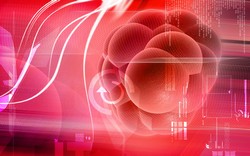Haematopoietic stem cells and microRNAs
MicroRNAs (miRNAs) are non-coding RNA molecules that have emerged as key regulators of gene expression. They bind to and inhibit translation of target messenger RNAs. Their role is well established in embryonic stem cells, but little is known about how they regulate translation in adult stem cells. Adult stem cells must balance between self-renewal and differentiation to avoid exhaustion. As a result, identification of the molecular determinants of this decision could be used to shift the balance for regenerative purposes. The EU-funded HSC SELF-RENEWAL (Global microRNA profiling of normal and Pbx1-null hematopoietic stem cells and progenitors for the identification of new regulators of the balance between self-renewal and differentiation) project focused on 'Haematopoietic stem cells' (HSCs) and the role of miRNAs in the maintenance of self-renewal. Previous work had shown that HSCs with a deletion in the proto-oncogene Pbx1 display reduced self-renewal, a high proliferation rate and a premature myeloid differentiation profile. In the present study, scientists used a Pbx1-conditional knockout mouse model to identify miRNAs involved in the maintenance of HSC self-renewal. For this purpose, they performed global miRNA profiling of HSCs and of their immediate downstream progeny called 'Multi-potent progenitors' (MPPs). The latter lack long-term self-renewal capacity and represent the first maturation step in the haematopoietic hierarchy. Scientists found 48 miRNAs differentially expressed between Pbx1-null and normal HSCs, as well as another 70 whose expression altered during the transition from HSC to MPP. Of particular interest was one miRNA that displayed an HSC-specific pattern and was deregulated in chronic myeloid leukaemia. The results from in vivo loss-of-function or gain-of-function experiments indicate that a tight regulation of the miRNA studied is necessary to maintain HSC function. Overall, the work carried out by HSC SELF-RENEWAL provides unprecedented evidence of the role of miRNA molecules in normal HSC self-renewal. The finding that the same miRNAs may also be involved in leukaemia opens up new paths for anticancer targeting therapies.
Keywords
Hematopoietic stem cells, self-renewal, micro-RNAs







